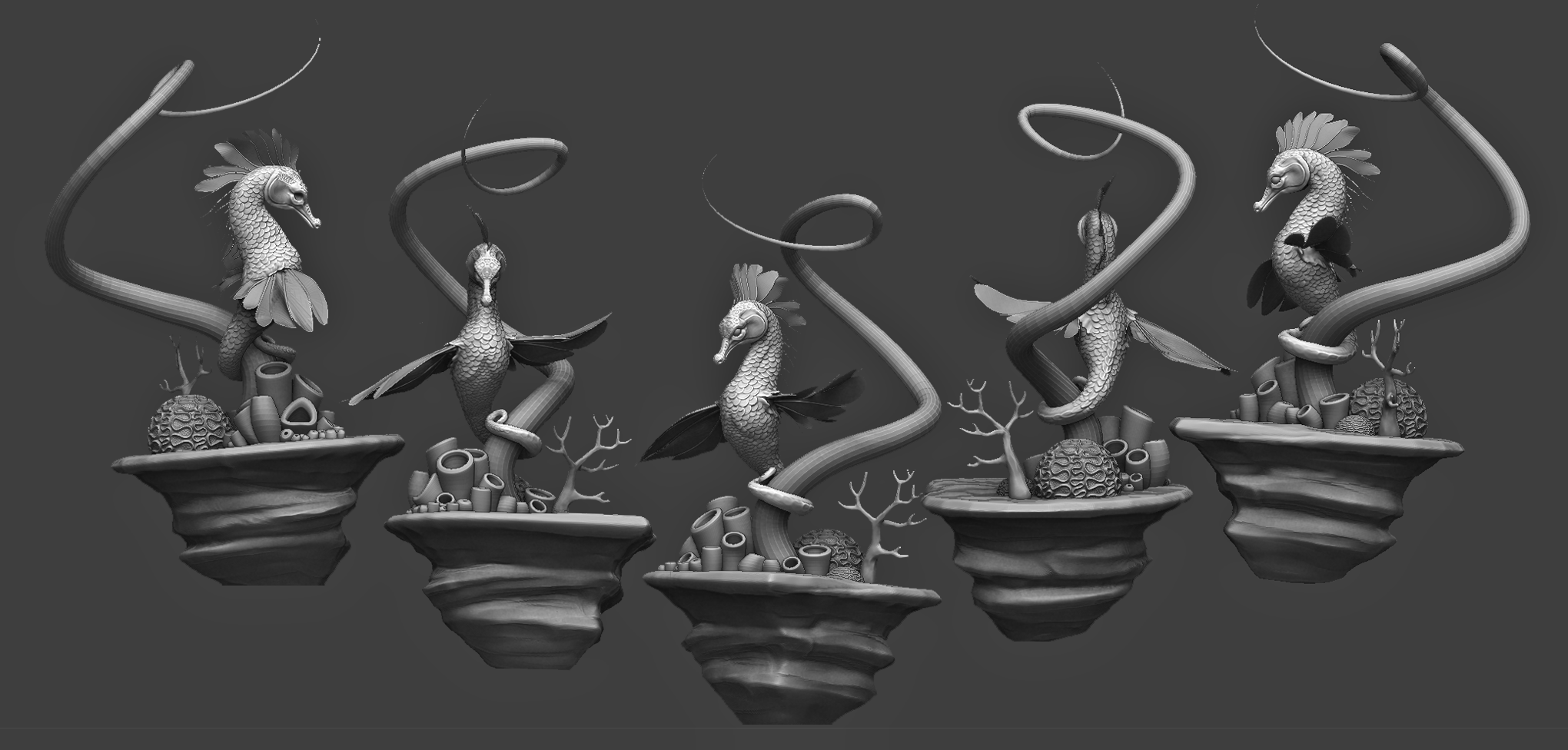This time around, I have continued to improve and block out the turntable for the seahorse. I Developed a slightly less tedious way to do the fins. It requires a few more steps but, in the end , it yields better results that require less tweaking. Looking closely at the model, it is apparent that the fins o the left side of the body look a little different than the right side of the body. This is because I used a different method for the right side, so the fins look cleaner and more precise. On the left side, there is a bit of warping and pinching, but I think that can easily be fixed inside of ZBrush, or I can go back and apply my new method for generating fins from the spines. I didn't realize actually how hard it can be just to figure out what types of corals there are and how to compose them in nicely on the turntable. I have made a few 'alien' corals based off of real-world corals like tube coral, brain coral and pink coral. I hope that by the next pass, I will have had the time to flesh out the corals some more and to add some unique surface detail to them!
These renders show some additional layout currently absent from my ZBrush scene. I have completed the spinal fins on the seahorse and I have begun adding additional objects to the environment.
This is the current progress in my ZBrush file. I have built a few coral assets and I have begun to add detail on the stone ledge. I am still working on the fins, but I have added the top pair of fins into the ZBrush file.


Comments
Post a Comment